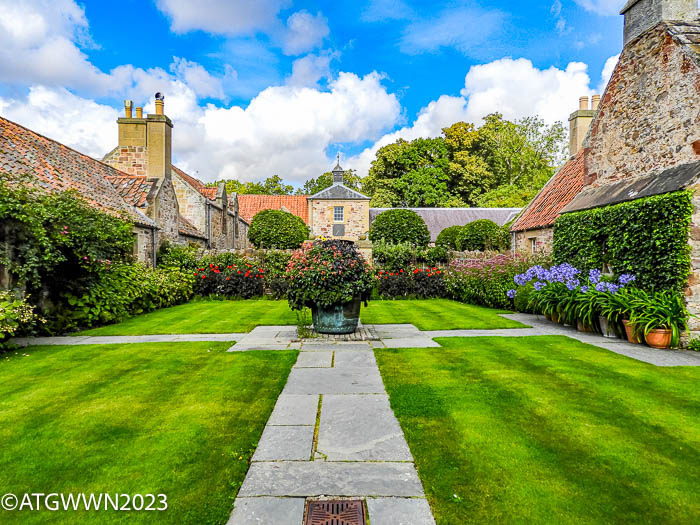
In a land of historic castle gardens, the contemporary Broadwoodside garden offers color, whimsy, and a story all its own.
Robert Dalrymple is a distinguished graphic designer known for his production of fine art books and catalogs. (British Art Museum, Victoria & Albert) His private home garden 25 miles outside Edinburgh is the result of transforming an old farm stead into an exceptional garden that rivals those centuries older.
In 1997 Robert and Anna Dalrymple began transforming the property which was registered as a farm as far back as 1509. Envisioning a new home they purchased the derelict stone farm buildings and the surrounding land. Robert grew up near here and was eager to take on this project.
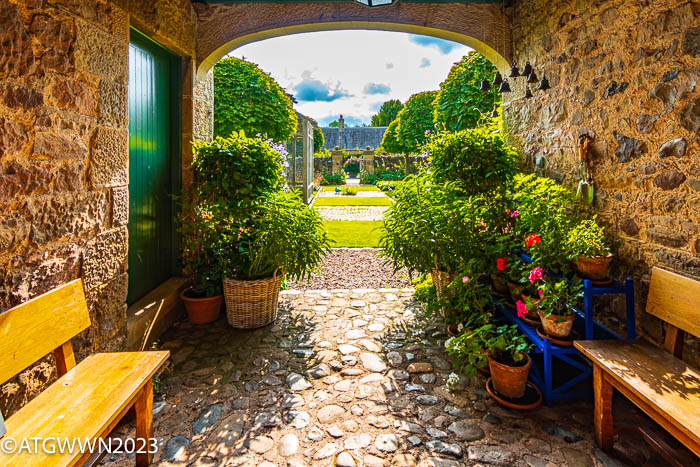
The architects seamlessly incorporated the old farm building walls into the framework of the home. The new rectangular eight-bedroom house enclosed the old farm yard (a farm steading in Scotland), and the space became the interior courtyard gardens.
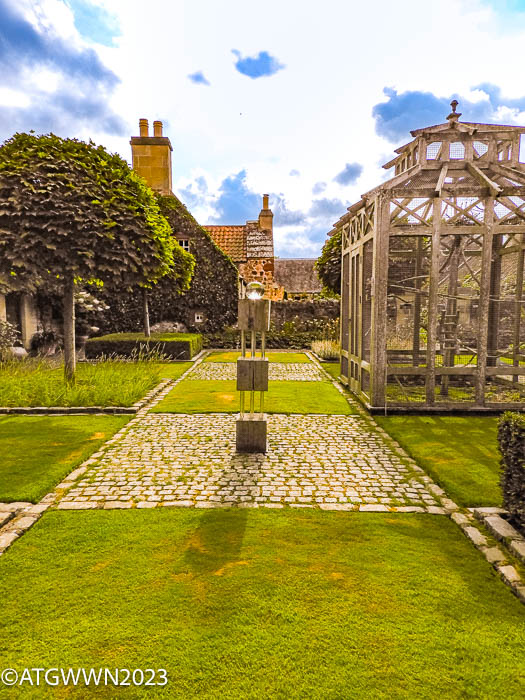
As a graphic designer, Robert is partial to straight lines and blocks of text. It is echoed in his use of linear design in the courtyards. Inspired by visits to other gardens and garden design books the couple laid out plans for a garden to look good 12 months of the year. The upper courtyard is segmented into a grid of five-by-five blocks of lawn, cobblestones, and shrub/tree plantings.
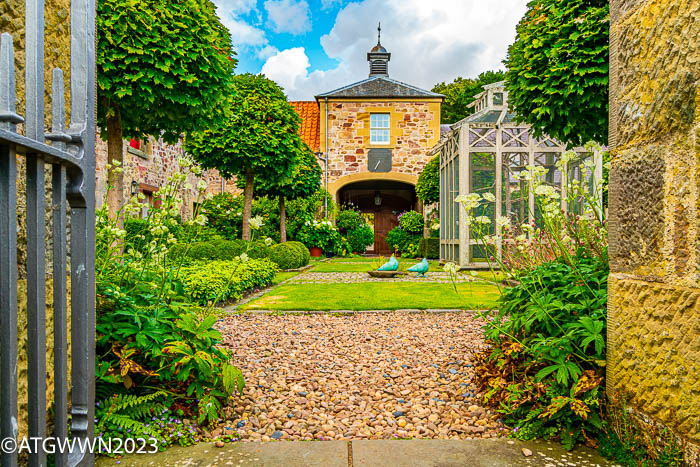 The lower courtyard is divided into lawn quadrants, so their four children would have room to play. His wife softens Robert’s strong lines with ivy, lilies, and climbing roses.
The lower courtyard is divided into lawn quadrants, so their four children would have room to play. His wife softens Robert’s strong lines with ivy, lilies, and climbing roses.
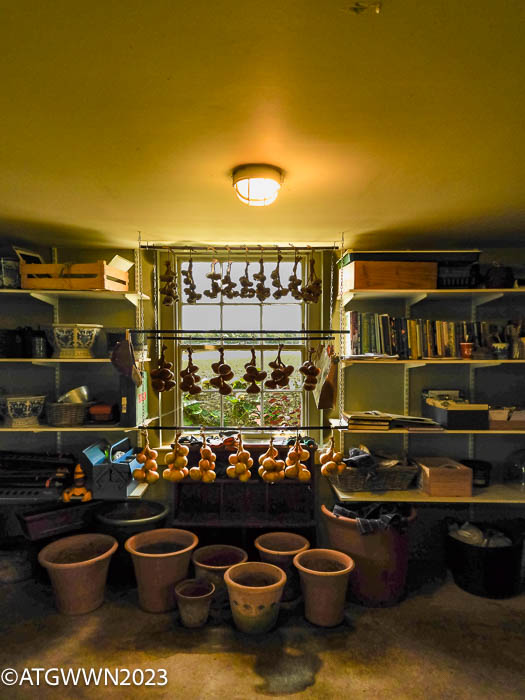
Guy Donaldson, the gardener, greeted us when we arrived and gave us an orientation for exploring the garden. Guy has been there since the beginning of this transformation and has kept everything growing and green. He and his family live in a cottage on the farm. The concept of a full-time gardener is unimaginable for us home gardeners, but the results are spectacular.
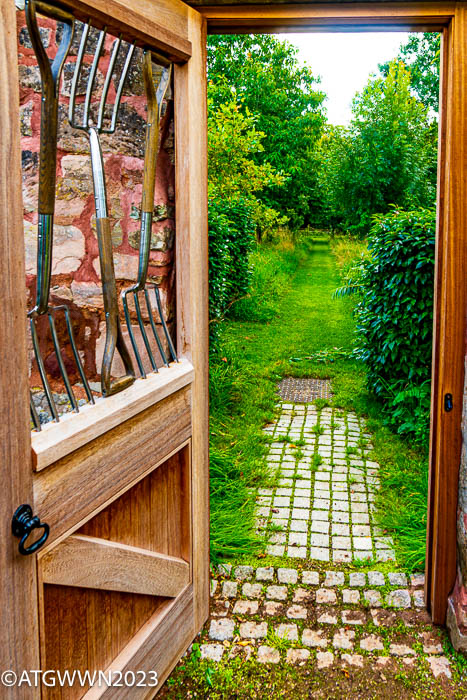
Guy needed to get some gardening done. Despite his long list of things to do he was so delightful to talk with; I followed him like a puppy into the flower-cutting and vegetable garden, where we continued our exchange of shared garden pleasures and challenges.
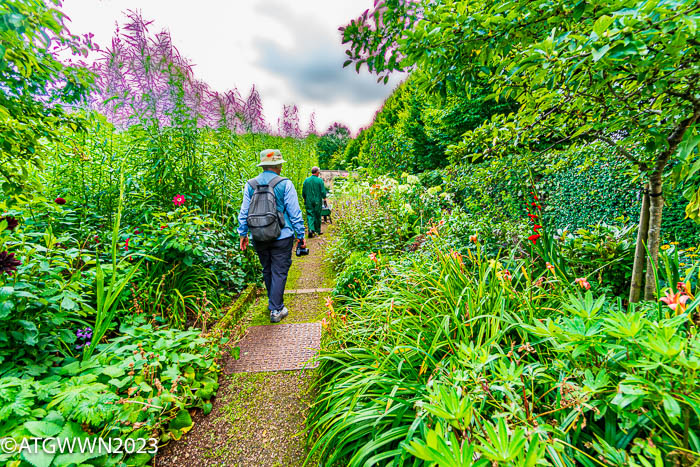
I asked for a pair of clippers and began deadheading the dahlias.
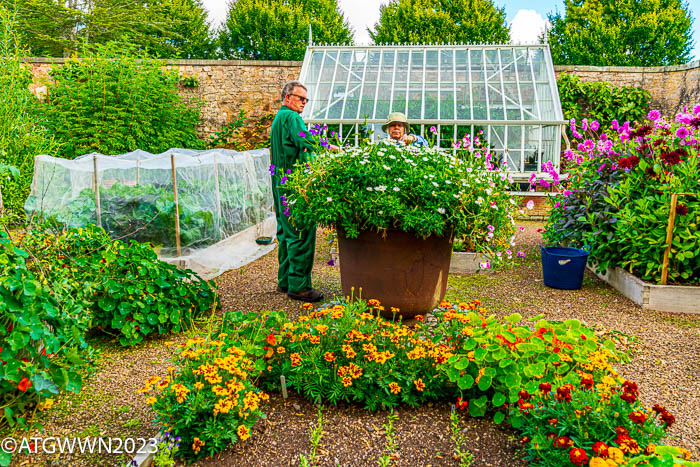
Dividing the flower and vegetable growing areas is a reflecting pool framed with 12 varieties of willow. The surrounding borders exploded with late summer flowers. Eventually, Guy left the garden for his lunch, and I went on to explore the rest of the grounds.
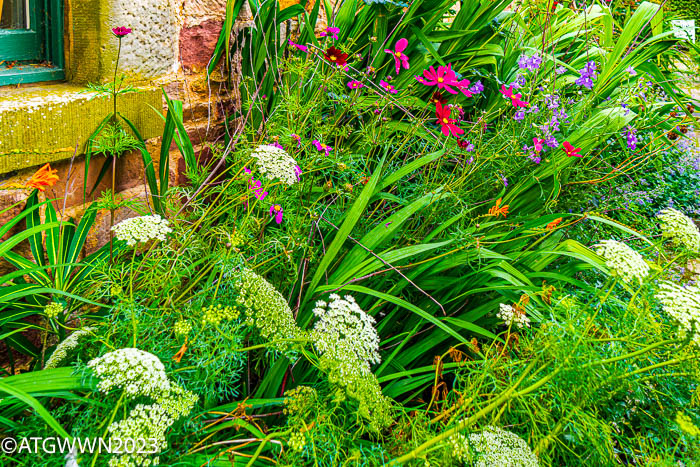
Further on, there is a “house field” with sculptures, hedges, grasses, and seating.
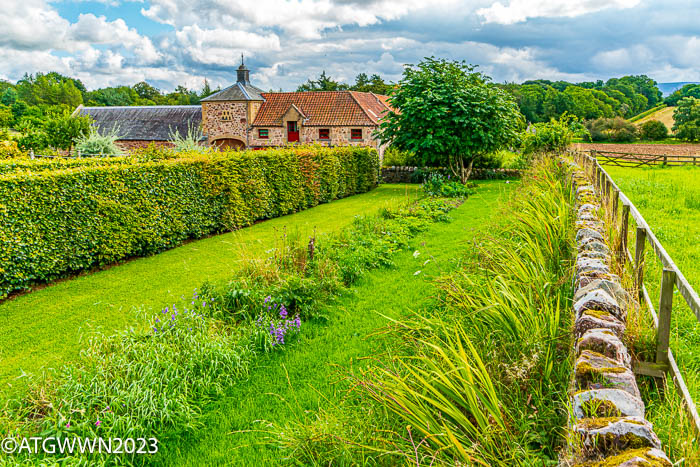
Whimsical sculptures add a personal touch to the garden, such as a diamond-shaped stone slab bearing the seemingly Latin inscription “ore stabit fortis arare placeto restat” which is really a spacing trick, “O rest a bit for tis a rare place to rest at.”
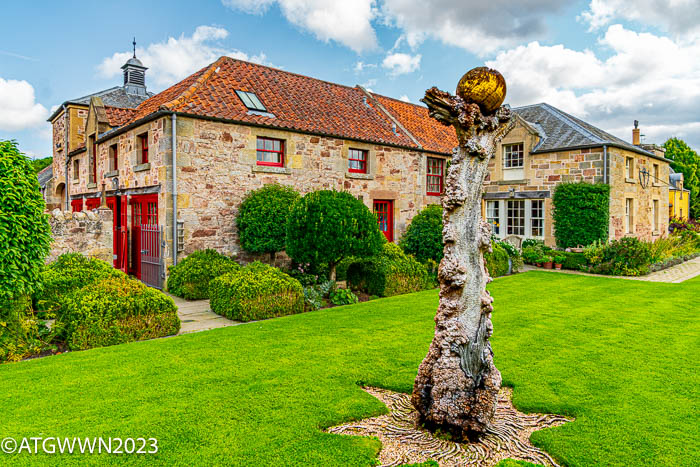
Another is a “planted” driftwood tree trunk topped with a golden orb—creative elements from a garden lover who doesn’t take the garden too seriously. I can relate.
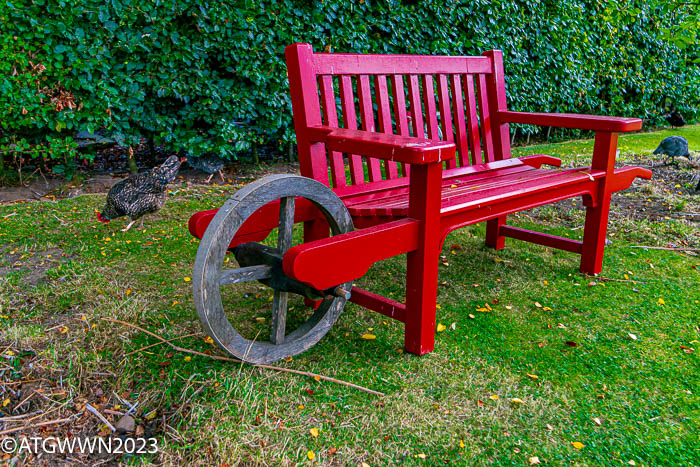
In the apple orchard a red wheelbarrow bench provides a great place to sit in the shade. The green lawn made a scratching space for a flock of colorful guinea hens and chickens. We rested there and fed the chickens our shortbread cookie crumbs.
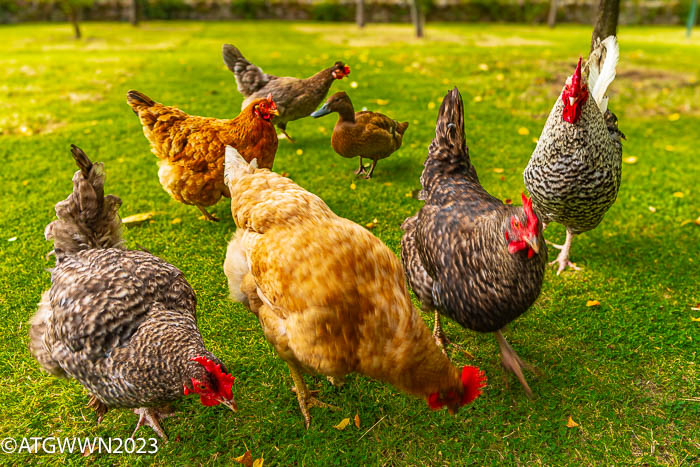
At the back of the property is a linden tree avenue, a canopy-covered track (road) that was once the main road between Edinburgh and Gifford. (Tilia × europaea, generally known as the European lime, or common linden)
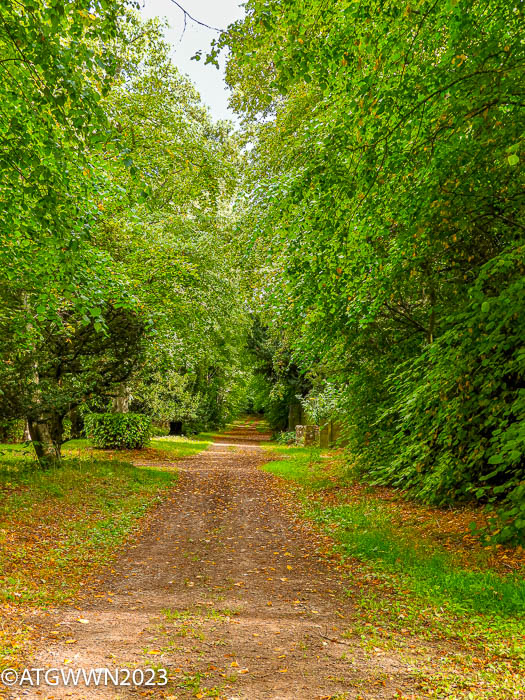
These trees can grow to 160” high. Surrounding the home and garden are tillable fields still used for agriculture.
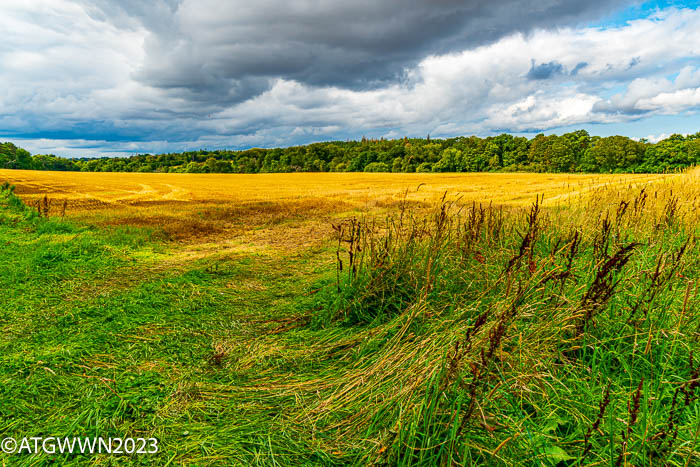
This is a new garden compared to the old Scottish Castle Gardens with just over 20 years of growing time. It is a contemporary design with a bold red accent color scheme working with the textural dominance of the honey-colored stone walls and lots of green.
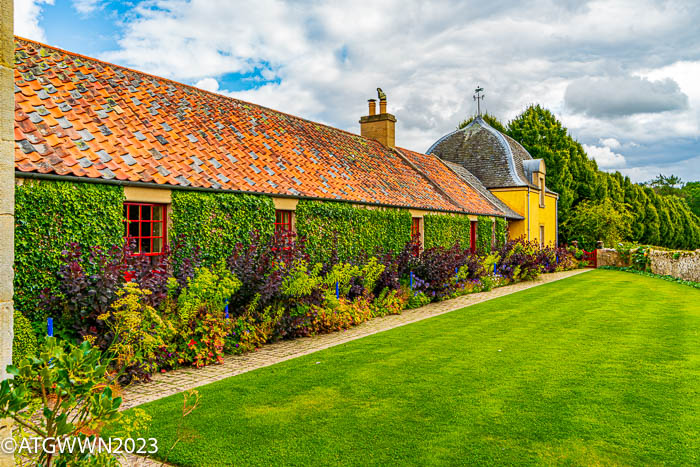
Between the field wall and the house, the vivid red accents, an ocher wash on the corner tower potting shed is planted with alternating deep purple smoke bush (Cotinus) and chartreuse Euphorbia (wallichii,) punctuated with cobalt blue posts. This color combo brightens even the cloudiest Scottish day.
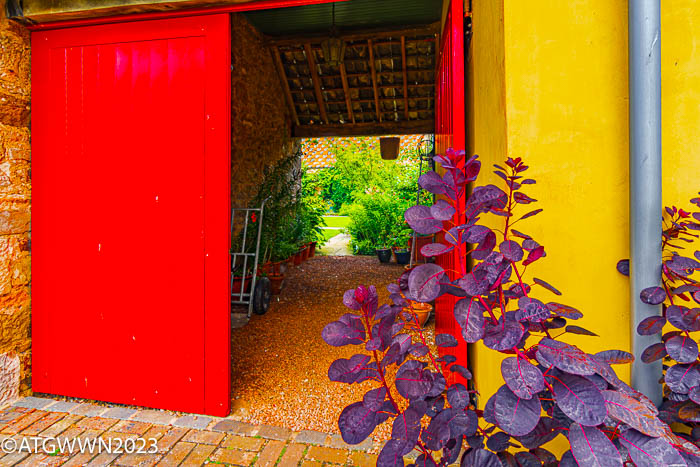
After a long and proper wander, we returned to the upper courtyard and sat just inside the terra cotta-colored loggia to absorb the atmosphere and beauty of the space. The whimsy continues here with THE WRITING IS ON THE WALL inscribed in the cement at one end. I can imagine many a lively gathering in this space.
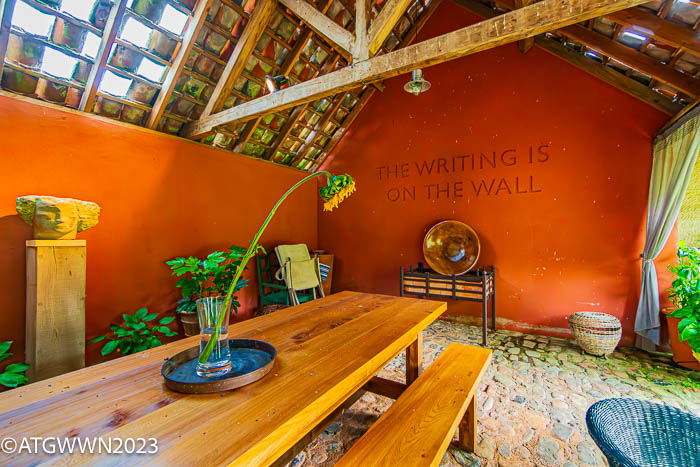
When it was time to leave, Guy gifted me with a small bouquet of sweet peas to carry the scent and memory of the Broadwoodside garden of with me as we reluctantly left this garden and drove on to the city of Edinburgh.
* a “’broad wood’ of birch and oak and the farm was to the side”
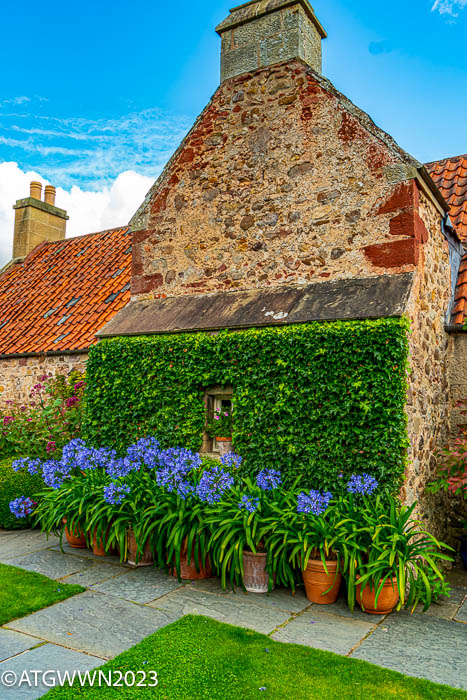
Thoughts from Robert Dalrymple, copied from Hortus No 133, Spring 2020, Henry Noltie
“For many years I harboured a guilty secret but, on reading an article in The Times that exactly echoed my own feelings, I realised I was not alone. ‘I have always hated gardening,’ wrote the columnist Damian Whitworth, ‘It is hard to think of any other activity in which the disparity between the happy idea of what it might be like and the tedious reality is so back-breakingly vast. I love a garden. I love being in a garden. I love looking at gardens and reading about gardens. I love thinking about what my garden could be like. It is just the gardening that I can’t handle.’
What no one seems to tell you is that gardening is really, really difficult. To get a group of plants to give a pleasing display over successive seasons, and from one year to the next, is a demanding skill. The bigger the area, the more complex the task. That is what makes the most celebrated herbaceous borders, those at Newby Hall in Yorkshire for example, such dazzling feats. No wonder, in the sort of gardens you see illustrated in glossy magazines, that the role of the garden designer has gained such traction in recent years. By definition, experts can do it better. However, it is widely perceived that the most interesting and atmospheric gardens are the most personal ones. And personal means DIY.” Hortus No 133, Spring 2020, Henry Noltie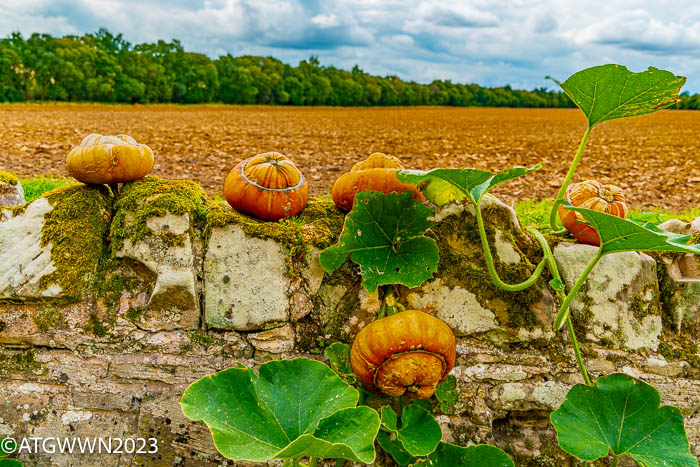
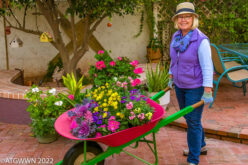
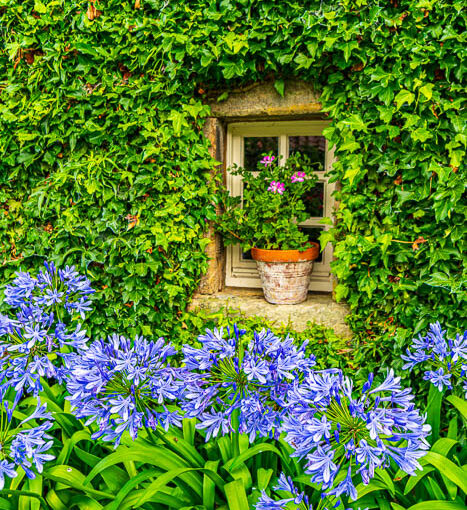
Spectacular as always.
JoAnn
DPGC
Thank you for introducing us to a unique garden whose owners obviously also have a great sense of humor. And what an honor to be invited to deadhead dahlias! Left your mark on this inspirational space.
Many thanks
Betsy
Many congratulations – enjoying celebrating all your happy years together – in no better place than your garden.
Thank you for taking us on another wonderful journey to- view Broadsidewood Garden , it was a delight with such beautiful grounds and planting , loved the red wheelbarrow seat and other unusual garden features. on the wish list to go.
Beautiful Linda, happy to see you traveling again.
Linda, this is so uplifting. Thank you for sharing.
This is so charming, Linda (and I think I see Rich in one photo too). The colors and light of this very unique place make a person almost feel they are there. The light is so good! It seemed like this gardener recognized that he could get a little help 🙂
P.S. And I’m remembering an old stone farm house in Wales